Palazzo Grassi seems to draw pestilence out of artists. When Luc Tuymans exhibited there in 2019 he proudly displayed paintings of pigeons all through the gallery, proclaiming them ‘the rats of Venice’. In ‘open-end’, Marlene Dumas has gone one better and brought a painting of an actual rat to the palazzo’s second floor. It was the last painting she produced for an exhibition in Antwerp in 2020.
As Tuymans conducted people across the gleaming polished concrete of the Grassi, no one suspected that plague-spreading animals might come so much to prominence only a year later. The Dumas show is mounted in full awareness of how devastating the spread of diseases can be. It is an idea that has infected much of the show, in particular the second floor, where death is explicitly confronted. The planning for this show began before the onset of the pandemic and was completed after the same pandemic had claimed the life of her partner, Jan Andriesse.
Dumas has a reputation for facing things head on. Paintings such as Intoxication (2018) and Drunk (1997), a full-frontal self-portrait in which she paints herself, in her words, ‘naked, old, drunk and female’, don’t shy away from self-revelation or emotional honesty, which is not to say that they always reach a commensurate emotional intensity.
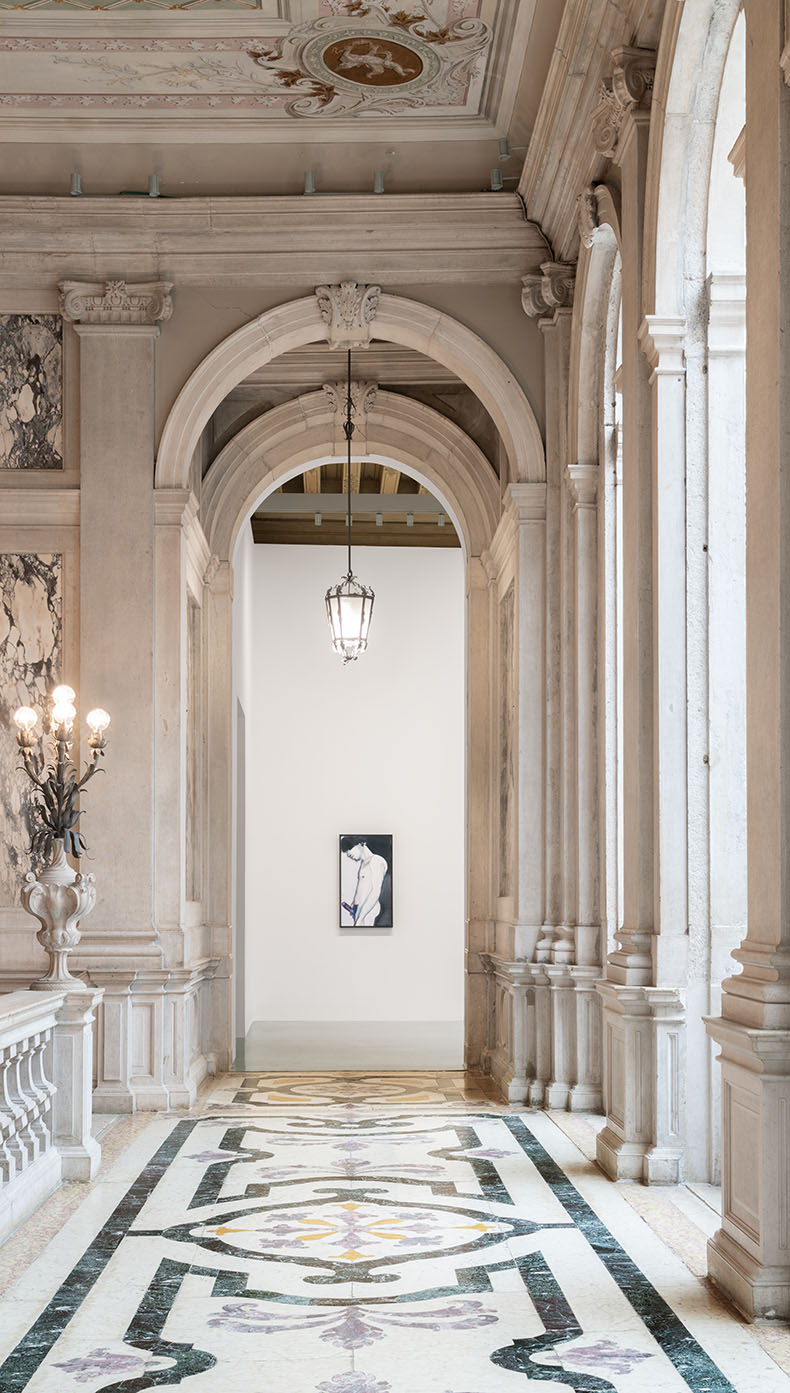
D-rection (1999), Marlene Dumas. Photo: Marco Cappelletti con Filippo Rossi. © Palazzo Grassi. © Marlene Dumas.
One of the curiosities of ‘open-end’ is the flatness of some of the pictures. In 1999, Dumas embarked on a series of works, MD-Light, for which she reproduced images from porn magazines. It is a work from this series, D-rection, that greets the viewer as they come up the stairs into the exhibition proper.
D-rection comes with Dumas’s customary word play, though here it seems to be more a distraction than a direction. What one cannot miss when confronted by the work – and is absolutely missed in its reproduction in the gallery guide – is the overwhelming, throbbing purple of the boy’s (young man’s?) hard cock. The contrast with the pale greys of the boy’s body is so strong that, for a moment, the body recedes away from all attention. If you look back at his body, however, what you notice is how very bleached the boy seems, as though life has been rendered out of him: he is just a pallid object. The same trick is performed in Turkish Girl and Fingers from the same series. The colour of the figures’ skin in these pictures is taken away through the use of an unhappily reduced palette. The accompanying text refers to ‘cold painting’ and ‘icy tones’, but it’s not so much that these scenes, which yoke together intimacy and publicity, are cold (as opposed to the heat traditionally associated with sex), as that Dumas has developed a style and handling of paint that leaves the subject flat. Despite a poem that Dumas wrote to accompany these works claiming the opposite, there isn’t a sense here of ‘the pleasures of painting’; there is, rather, a sense of rigorous control. It is fascinating to look at them, but it is also unnerving. This might be where Dumas’s full-frontal sensibility comes into its own.
Then there are the political works, which are bold from a different angle. Betrayal (1994) and Great Men (2014–present) seem to both come from a concern for social justice. Both consist of depictions in ink of human heads on sheets of paper hung in grids. One serves as an argument in favour of individuality and against the dangers of categorisation typical of apartheid-era South Africa while the other protests the criminalisation of sexuality. Both represent fine technical achievements and are moving precisely for looking at the inhumanity of humans so humanely.
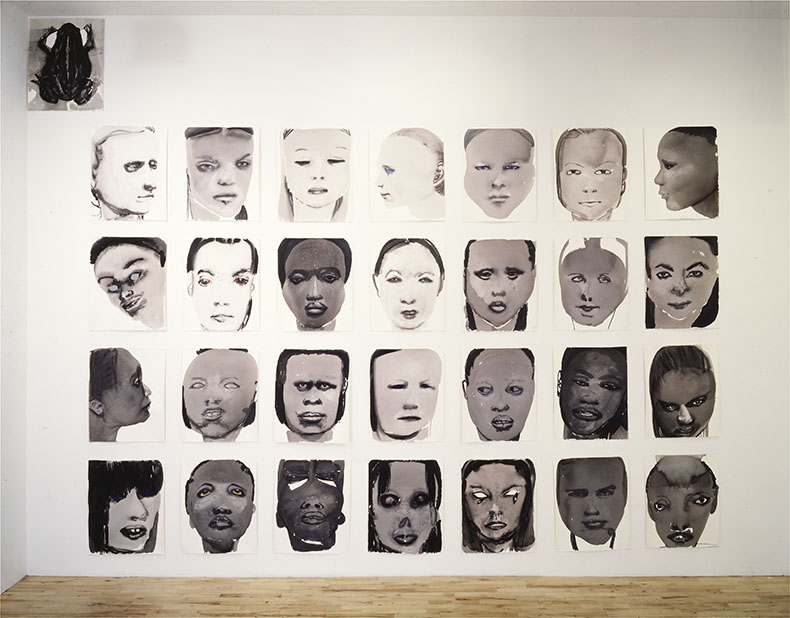
Betrayal (1994), Marlene Dumas. Courtesy David Zwirner. Photo: Emma Estwic, New York. © Marlene Dumas.
By the end of this large, large exhibition, humanity is what is most apparent. But it is apparent in a way that is emptying out – or at least that was for me. Halfway around the second floor you come to a solitary painting of flowers on a grave, Einder (Horizon) (2007–08). The flowers are, in fact, the flowers from the grave of Dumas’s mother. In the original conception of the exhibition, Dumas wanted this to be the final painting, but she didn’t like the way it hung in the last room so moved it to a larger space earlier in the gallery. It is a painting which shifts the tone of the exhibition. Death is summoned; the seriousness of the next ten rooms is set and you feel an artist getting closer and closer to exploring the unexplorable. In Child Waving we see an image taken from a photograph of the Iraq War. It is not an easy image: the blurry figure of a soldier looms over a child and the potential hell of this encounter hangs around the edge of the work. Yet there is nothing self-conscious about it despite the way the paint is deployed on the canvas: the restricted colours, the loose brushwork, except in the rendering of the child. It is a lesson in control revealing the absence of control.
About halfway through the exhibition is a room containing two series of illustrations that Dumas created to illustrate her friend Hafid Bouazza’s translation of Shakespeare’s Venus and Adonis. One of the illustrations is an exquisite ink wash of a snail. The snail appears once in the poem, when Venus discovers the body of her devoured lover and her eyes withdraw
[…] as the snail, whose tender horns being hit,
Shrinks backward in his shelly cave with pain
And there, all smother’d up, in shade doth sit,
Long after fearing to creep forth again
Dumas has, yet again, found a way of thrusting into everyone’s line of vision that at which it is more often impossible to look.
‘Marlene Dumas: Open-End’ is at Palazzo Grassi, Venice, until 8 January 2023.
Unlimited access from just $16 every 3 months
Subscribe to get unlimited and exclusive access to the top art stories, interviews and exhibition reviews.

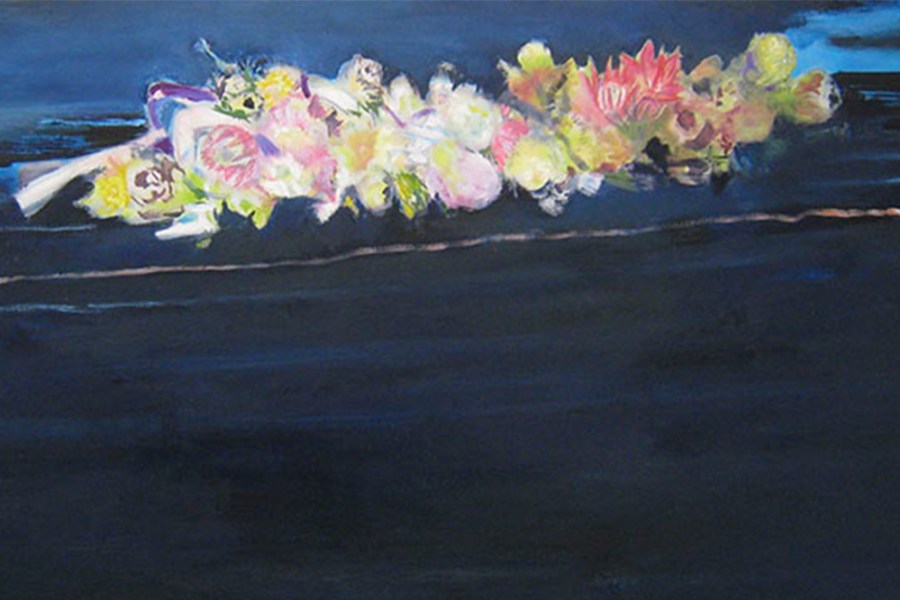
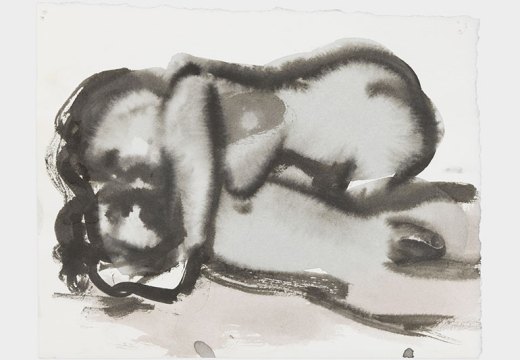
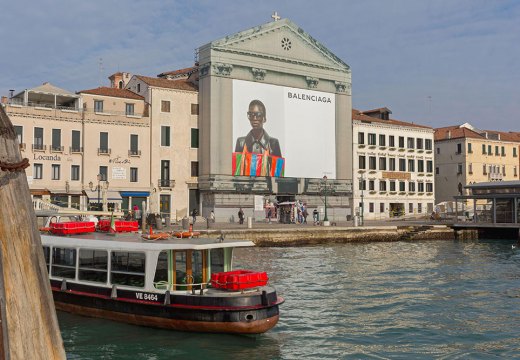
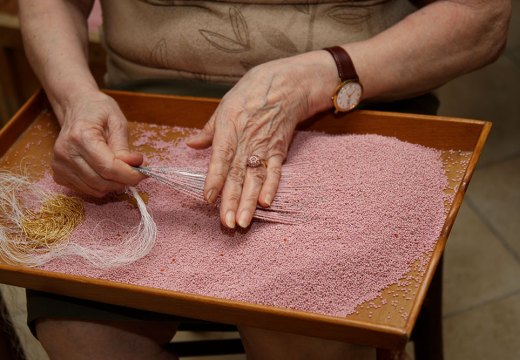









![Masterpiece [Re]discovery 2022. Photo: Ben Fisher Photography, courtesy of Masterpiece London](http://www.apollo-magazine.com/wp-content/uploads/2022/07/MPL2022_4263.jpg)
Why are fathers so absent from art history?